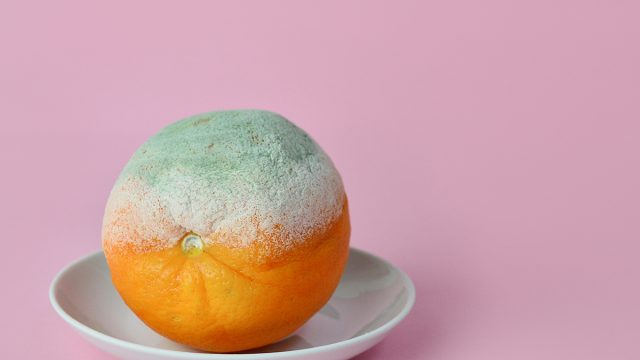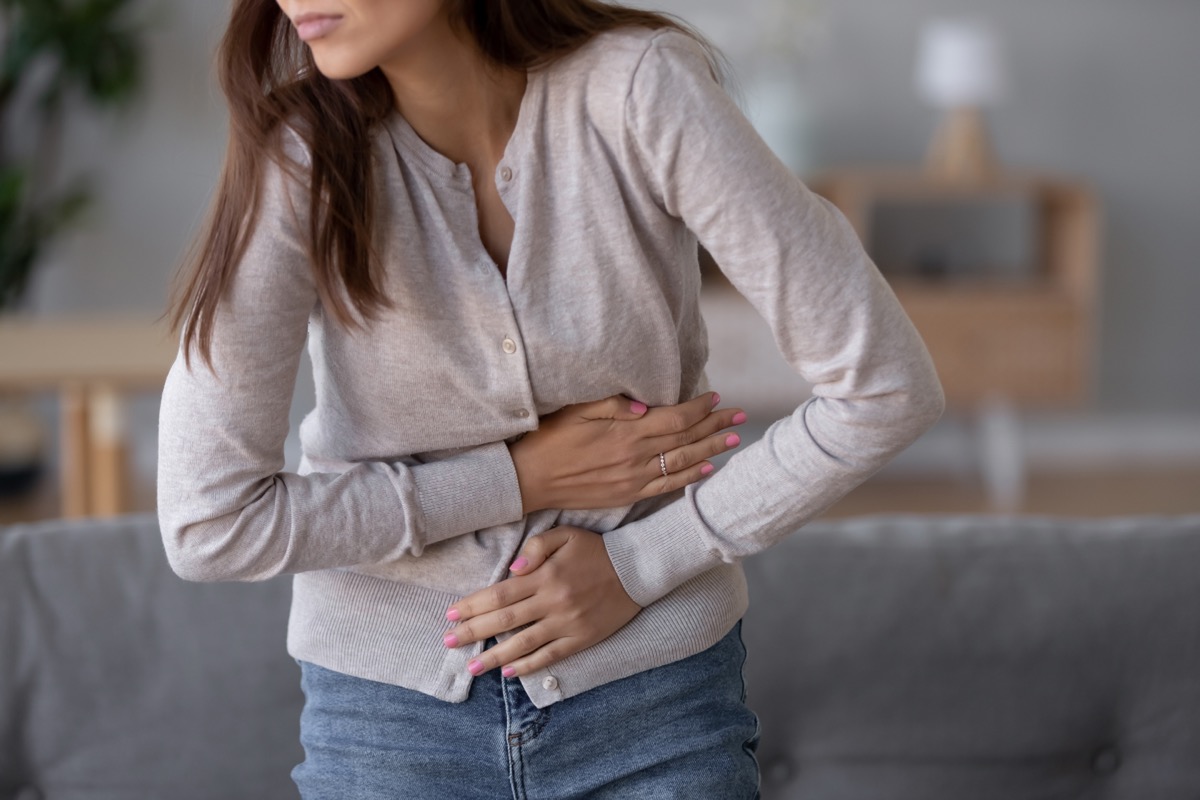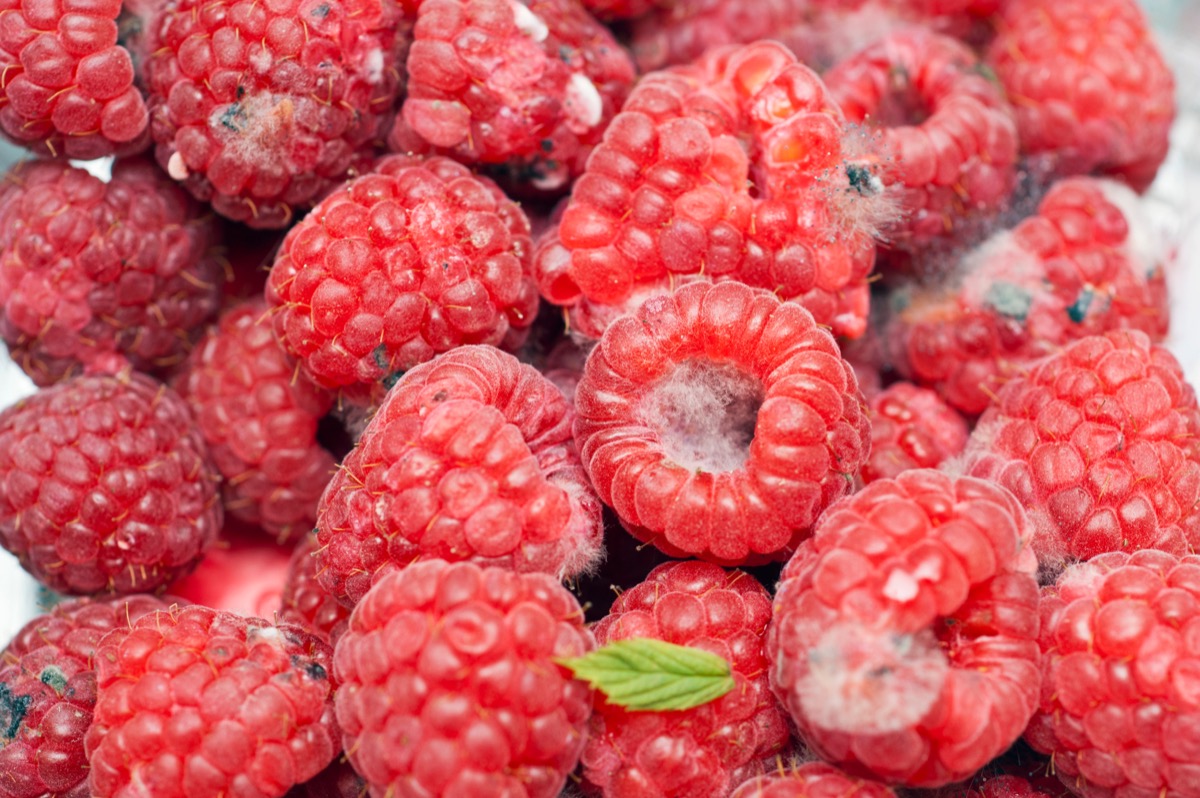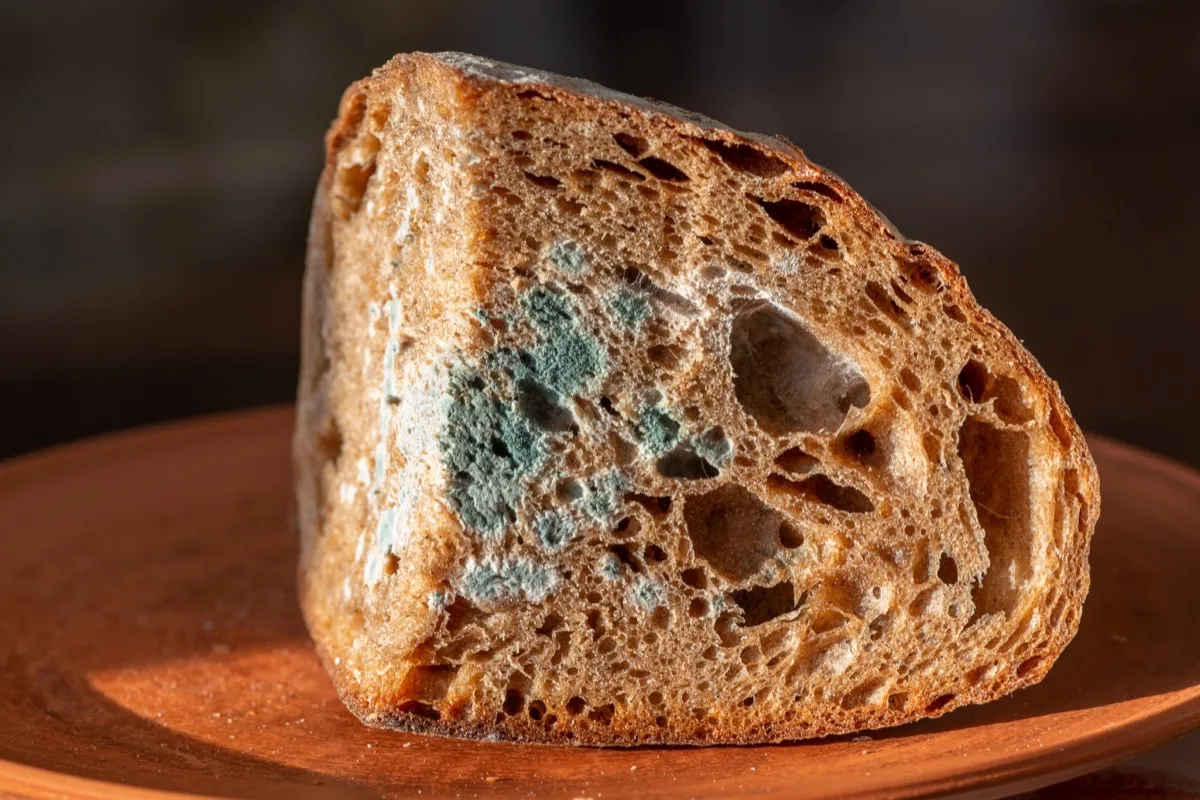What Happens If You Accidentally Eat Moldy Food, According to Doctors

Composed of microscopic fungi, mold thrives in high-moisture foods such as fruits, vegetables, and bread. However, it can grow on just about any type of food, and experts warn that it’s not always visible to the naked eye. That’s because in addition to the fuzzy spores that sometimes serve as a red flag on the surface of your food, mold also takes root deeper inside a contaminated food item—so you may not even realize you’re ingesting mold until it’s too late.
But what happens if you accidentally ingest food that has mold on it? Doctors say that while you’ll most likely be fine, it’s important to be on the alert for certain symptoms that may indicate a deeper problem. Read on to learn what can happen when you eat moldy food, and how to safely store your food to avoid getting sick.
READ THIS NEXT: Never Wash These Vegetables Before Eating Them, Experts Warn.
Accidentally eating moldy food can cause serious symptoms.

Most people instinctively recoil at the thought of eating moldy food, and know to avoid any discolored or fuzzy patches that would indicate fungal growth. Yet it’s not uncommon to realize you’ve eaten something with mold on it only after chewing and swallowing.
Though you’re unlikely to have a serious reaction to consuming a small amount of mold, you may experience unpleasant gastrointestinal symptoms, experts say. “Most likely, if you accidentally eat moldy food, you will experience digestive upset such as nausea, vomiting, and abdominal cramps,” says Gabriela Rodríguez Ruiz, MD, PhD, FACS, a board-certified bariatric surgeon at VIDA Wellness and Beauty.
However, Ruiz notes that in rare cases, more serious allergic reactions do occur, “including anaphylaxis, which is a life-threatening reaction that requires immediate medical attention.” Call 911 for emergency assistance if you develop signs of anaphylaxis, which can include skin rash, nausea, vomiting, difficulty breathing, and shock.
READ THIS NEXT: Eating This Type of Cereal for Breakfast Can Slash Diabetes Risk, Experts Say.
Some types of mold are worse than others.

Certain types of mold can be more dangerous than others, notes Ruiz. “The most common and potentially harmful molds found in food include Aspergillus, Fusarium, Penicillium, Rhizopus, and Cladosporium. These fungi produce mycotoxins which can cause serious health issues when consumed,” she explains. According to the U.S. Food and Drug Administration (FDA), grains, dried beans, dried fruits, and coffee are especially susceptible to developing mycotoxins.
However, Ruiz urges that all types of mold can cause health consequences, and says it’s wise to throw away any food that has visible mold or a foul smell. “It is important to inspect perishable foods regularly and discard anything that appears spoiled. If you do eat something that might be contaminated with mold, contact your doctor immediately for advice and treatment,” Ruiz urges.
Don’t try to cut off the mold, experts warn.

If you’ve ever come across some mold on an isolated portion of your food and wondered whether you might be able to salvage the rest, you’re not alone. However, Ruiz recommends against it, saying it’s better to err on the side of caution. “It is not advisable to consume any portion of a food item that has visible mold, as it can spread quickly to the non-visible portions and contaminate the entire product,” Ruiz tells Best Life. She adds that “some molds may produce toxins even when they are not visible.”
However, according to a helpful guide by the U.S. Department of Agriculture (USDA), there are some exceptions to the rule. For instance, you can save a block of hard cheese by cutting around any visible mold with a one-inch margin.
For more health news sent directly to your inbox, sign up for our daily newsletter.
Here’s how to store food safely to avoid a problem.

By practicing proper food safety and storage procedures, you should be able to help prevent mold from growing on your food in the first place. “First, keep perishable foods in the refrigerator or freezer as soon as possible after purchasing them. When storing produce, make sure to clean and dry items thoroughly before placing them in the fridge. For extra measure, you can also wrap leafy greens, berries, and other delicate products in a damp paper towel before storing them,” Ruiz recommends.
She also suggests using airtight containers to help keep moisture away from food, thereby preventing mold growth. “Make sure to regularly inspect stored food items and discard any that appear spoiled or have an unpleasant smell. And finally, it is important to label and date all food items so that you can easily identify anything that has been in the fridge for too long,” she says. By following these simple steps, you can help keep your food fresher for longer, and reduce your odds of developing a mold-related illness.